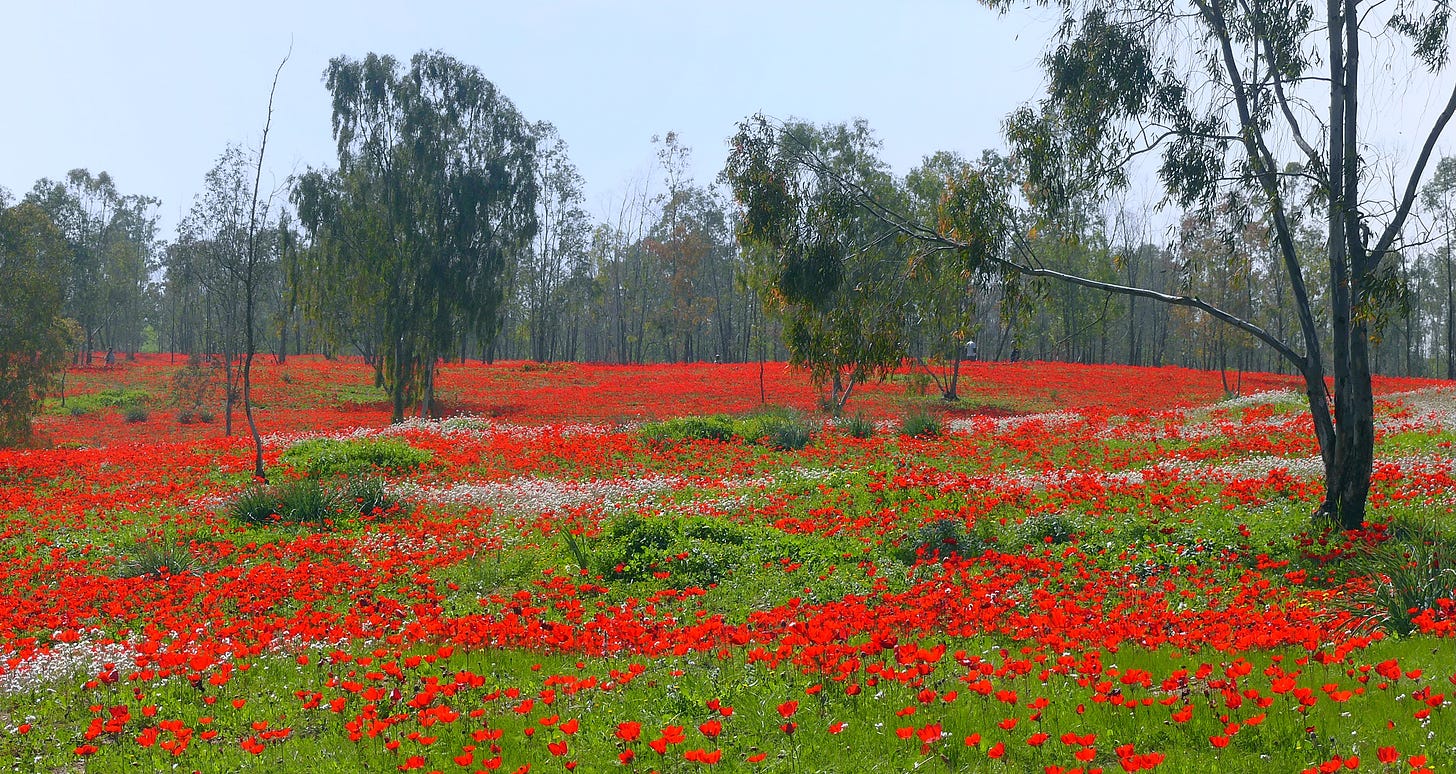Windflower was not the name I intended to choose. If I’d named it after a flower, it might have been dianthus, or the little phylla (aka matchweed) blossoms I love. Then the name Windflower came into my mind, and I remembered a painting, which I’ve always liked and sometimes used as a profile picture: Windflower, by John William Waterhouse. I’d never realized the flowers in it were anemones. As I began to research, I realized that these flowers summed up everything I wanted to encapsulate, specifically God’s love.
The ancient Greeks would tell us that the anemone sprouted from the wounds of Adonis at his death, and from the tears of Aphrodite. Christians subsequently attached the simple, lovely flower to Christ’s Passion. Legend tells us that they bloomed where His Precious Blood fell; others say they blossomed from the tears of Our Lady.
This tale replaces the Greeks’ worldly summit of human beauty, love, divinity, and perfection with the true pinnacles of manhood and womanhood: the true Divine Word become Man, surpassing all in excellence, goodness, and unfathomable love, and the Virgin Mother, full of grace.
From these legends come the anemone’s symbolic role in art, that of a hint of death, grief, and various stages of love, depending on the color painted.
It is further believed that the famous ‘lilies of the field’ spoken of by Christ are, in fact, not lilies at all, but these same blossoms, specifically Anemone Coronaria. This species, so named for the crown-like ring around its center, is found throughout Israel. The red blossoms are beloved there, enough to be named the national flower, drawing many into the fields; but they’ve recently become again a symbol of sorrowful love and memory for the brutality those same flower fields have seen.

A third symbolism of the anemone can be found in its name, which translates to ‘daughter of the wind.’ As a natural symbol, the flower is delicate enough that the wind may tear its dying petals away, yet the flower remains standing. It reminds us, too, of the rushing wind at Pentecost – to me, every breeze reminds me that He’s present with me, and so personally I consider the name fitting. We may be daughters of the Holy Spirit, praying as Mary did for His gifts and His fire.
In everything we do, we should train ourselves to find the love of God in it, be motivated by it, live within His Heart, and to ask for His love, for it’s something He never refuses. Our vocation, especially as women, can be to love; to nurture souls; and to find beauty in God’s creation. I hope that I’ll be able to do this in my writings.
This is why Windflower is so named: as a reminder of, and in honor of, Christ’s love – the love which loved even unto death, death on the Cross, which gives us all our hope. For the sorrow of all the injury done to Him every day, and in reparation for it; for the tears Our Lady shed at the Cross, at La Salette, and still sheds for each one of us; in memory of those who suffer; and the prayer that no matter the storm, we will still stand, that the breeze may only be the kiss of the Holy Spirit and the calling of us to remain in God.
This is Windflower.




